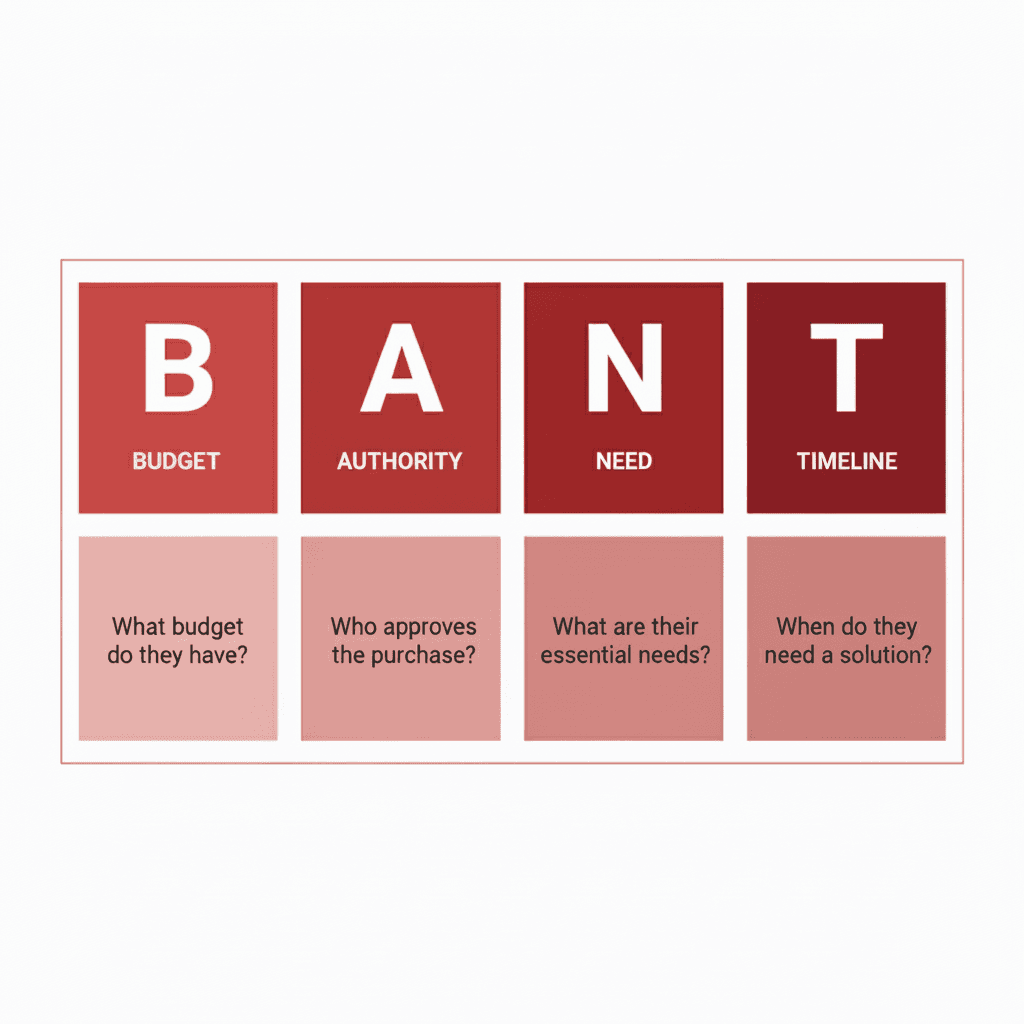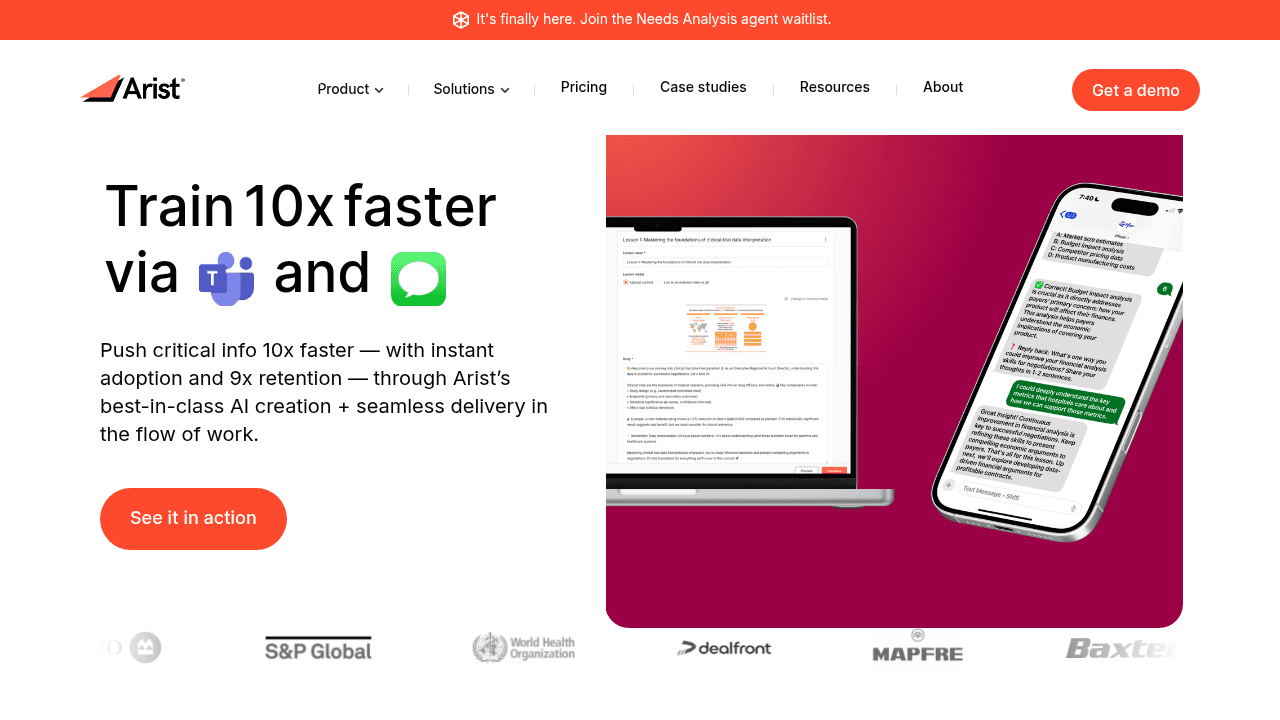What is BANT Sales? Complete Guide + Expert Tips for October 2025
Sales methodologies come and go, but one framework that continues to come up in 2025 is BANT. Sales has changed dramatically over the decades, yet the core challenge remains the same: how do you quickly separate serious buyers from casual browsers? This article explores why qualification frameworks still matter today, and how modern training tools can help teams put them into practice.
TLDR:
BANT (Budget, Authority, Need, Timeline) helps sales teams qualify prospects faster by checking four key criteria before investing time
You can use strategic questions to uncover each BANT element, but lead with challenges rather than budget to build rapport first
BANT works best for simple sales but struggles with complex B2B deals involving multiple stakeholders and long cycles
MEDDIC and CHAMP offer more sophisticated alternatives for enterprise sales requiring deeper qualification processes
Modern sales training platforms make it easier to practice and apply qualification frameworks at scale, helping reps turn theory into repeatable results
What is BANT Sales?
BANT sales methodology is the foundational framework that helps sales teams qualify prospects by checking four key elements: Budget, Authority, Need, and Timeline. Developed by IBM in the 1950s, this approach remains one of the most widely adopted qualification systems in sales organizations worldwide.
The core premise is simple. Before investing major time and resources in a prospect, sales reps need to determine whether that lead has the financial capacity to purchase, the authority to make decisions, a genuine business need, and a realistic timeline for buying.
However, successful implementation requires more than just understanding the acronym. Sales reps need proper training on how to uncover each element through strategic questioning and active listening. This is where many organizations struggle, as sales enablement becomes important for framework adoption.

How the BANT Framework Works
The BANT framework operates by systematically checking four distinct components that determine a prospect's readiness to purchase. Each element serves as a qualification checkpoint that helps sales reps make informed decisions about opportunity prioritization.
Budget shows the prospect's financial capacity to make a purchase. This means having money available and understanding their spending priorities, approval processes, and ROI expectations.
Authority focuses on identifying who has the power to make purchasing decisions. In complex B2B sales, this often involves multiple stakeholders with different levels of influence.
Need looks at whether the prospect has a genuine business problem that your solution can solve. This goes beyond surface-level pain points to understand the underlying challenges, their impact on the business, and the urgency of finding a solution.
Timeline sets when the prospect plans to make a purchasing decision. This helps sales reps focus on opportunities based on deal velocity and align their follow-up activities accordingly.
The framework works best when sales reps gather information about all four elements early in the sales process. This allows them to qualify or disqualify opportunities quickly, rather than finding deal-breaking issues late in the cycle.
Modern sales teams that implement structured qualification frameworks like BANT see big improvements in deal velocity and win rates compared to those using ad hoc qualification approaches.
Benefits of Using BANT in 2025
52% of sales professionals rely heavily on the BANT method to qualify leads, and for good reason. The framework continues to deliver measurable benefits for sales organizations across industries.
Speed gains represent the most immediate advantage. Sales reps can quickly assess prospect quality and make informed decisions about time allocation. Instead of pursuing every lead equally, they can focus on opportunities with the highest probability of closing.
Improved resource allocation becomes possible when sales managers understand which deals meet BANT criteria. They can assign their best reps to qualified opportunities while using junior team members for lead development activities.
Better forecasting accuracy results from consistent qualification standards across the sales team. When everyone uses the same criteria to assess opportunities, sales managers can make more reliable predictions about pipeline conversion.
BANT's structured approach supports improved employee training by providing clear criteria for evaluation and coaching. Sales managers can easily identify where reps need additional development and provide targeted feedback.
BANT Framework Limitations in Modern Sales
While BANT remains popular, it faces major challenges in today's complex B2B sales environment. With less focus on relationship building and complex sales cycles, BANT isn't a one-size-fits-all lead qualification strategy.
The budget-first approach can be problematic in consultative sales. Leading with budget questions often creates adversarial dynamics before trust is built. Many prospects don't have predetermined budgets and instead allocate funds based on the value they perceive from potential solutions.
Stakeholder complexity is another major limitation. BANT's authority component assumes clear decision-making hierarchies, but modern B2B purchases often involve buying committees with distributed influence. A single "decision maker" rarely exists, making traditional authority qualification insufficient.
Limited relationship focus means BANT doesn't account for the relationship-building that drives complex sales. The framework treats qualification as a checkbox exercise rather than an ongoing process of mutual review and trust development.
Timeline assumptions can be misleading in enterprise sales where procurement processes, budget cycles, and organizational priorities create unpredictable delays. Prospects may have urgent needs but face internal constraints that extend timelines beyond their control.
Certain elements of the BANT methodology don't hold much relevance in the context of modern sales, so it has to be modified to meet the needs of today’s buyers.
AI-powered training can help sales teams understand when to apply BANT versus more advanced qualification methodologies. The key is matching the framework to the sales situation rather than forcing every opportunity through the same qualification process.
MEDDIC Sales Methodology
MEDDIC is a better alternative to BANT, designed for complex enterprise sales environments. The framework stands for Metrics, Economic Buyer, Decision Criteria, Decision Process, Identify Pain, and Champion.
Metrics: Focus on business impact.
Economic Buyer: The person controlling budget and outcomes.
Decision Criteria: Requirements and evaluation factors.
Decision Process: Steps and stakeholders in buying.
Identify Pain: Deeper discovery of core issues.
Champion: Internal advocate to drive the deal.
The methodology particularly excels in enterprise environments where complex product sales training becomes necessary for success. MEDDIC provides the framework needed to manage long sales cycles and multiple decision influencers.
Why Modern Teams Rely on Arist
Adopting frameworks like BANT or MEDDIC is only half the battle. The real challenge is making sure sales teams actually apply them consistently, at scale. That’s where Arist comes in.

Arist uses AI to turn massive documentation and data into personalized, high-impact training delivered directly in the tools your team already uses. Instead of static, one-off courses, reps get real-time, contextual learning that drives behavior change.
Key capabilities include:
AI Course Creator: Converts 5,000+ pages of docs into tailored courses and comms in one click, 10x faster than traditional methods.
Creator & Needs Analysis Agents: Build personalized training content, surveys, and identify skill gaps using HRIS data and natural language interviews.
Routing & Evaluation Agents: Automate smart cohorts, schedules, and provide real-time analytics on engagement, gaps, and outcomes.
Multi-channel delivery: Training via SMS, Slack, Teams, WhatsApp, or email with 95% adoption within six minutes.
Microlearning & spaced reinforcement: Bite-sized lessons spread across weeks that boost knowledge retention by up to 50% for two years.
Automated triggers: Integrates with Salesforce, Gong, and more to launch learning at the exact moment of need.
With 84% completion rates and 8/10 learner satisfaction, Arist is trusted by Fortune 500 enterprises to replace legacy training with continuous, personalized enablement.
FAQ
How do I implement BANT qualification without sounding like I'm interrogating prospects?
The key is weaving BANT questions naturally into consultative conversations rather than conducting a checklist interview. Build rapport first, then gradually uncover qualification information through strategic follow-up questions that feel like genuine business discussions rather than sales tactics.
What's the main difference between BANT and MEDDIC sales methodologies?
BANT focuses on four basic qualification elements (Budget, Authority, Need, Timeline) and works well for simpler sales, while MEDDIC provides six detailed components designed for complex enterprise sales with multiple stakeholders and longer decision cycles.
When should I consider switching from BANT to a more advanced qualification framework?
If you're selling solutions above $100,000, dealing with buying committees instead of single decision makers, or experiencing long sales cycles with multiple stakeholders, frameworks like MEDDIC or CHAMP typically deliver better results than basic BANT qualification.
Can I modify BANT to work better for modern B2B sales?
Yes, many successful sales organizations create hybrid frameworks by combining BANT with elements from other methodologies, such as leading with challenges instead of budget (CHAMP approach) or adding champion identification for complex deals.
Final thoughts on BANT sales qualification
The beauty of BANT lies in its simplicity, but your success depends on adapting it to fit modern buying behaviors. Whether you stick with the classic framework or evolve toward something more sophisticated like MEDDIC, the goal remains the same: qualify smarter, not harder. If you're ready to help your sales team master these qualification techniques, modern training platforms like Arist can change how reps approach every prospect conversation.
Bring
real impact
to your people
We care about solving meaningful problems and being thought partners first and foremost. Arist is used and loved by the Fortune 500 — and we'd love to support your goals.
Curious to get a demo or free trial? We'd love to chat:


